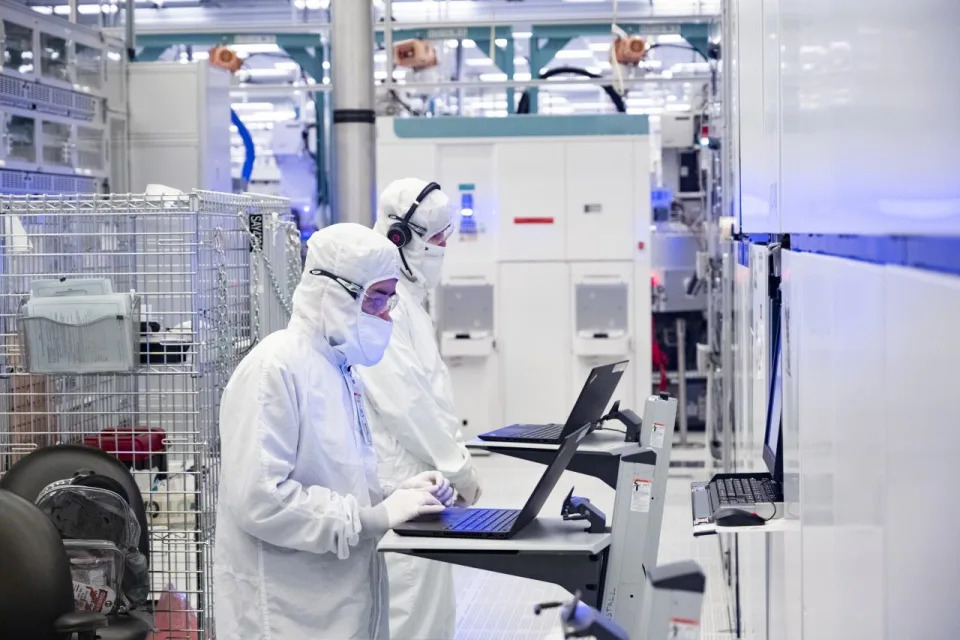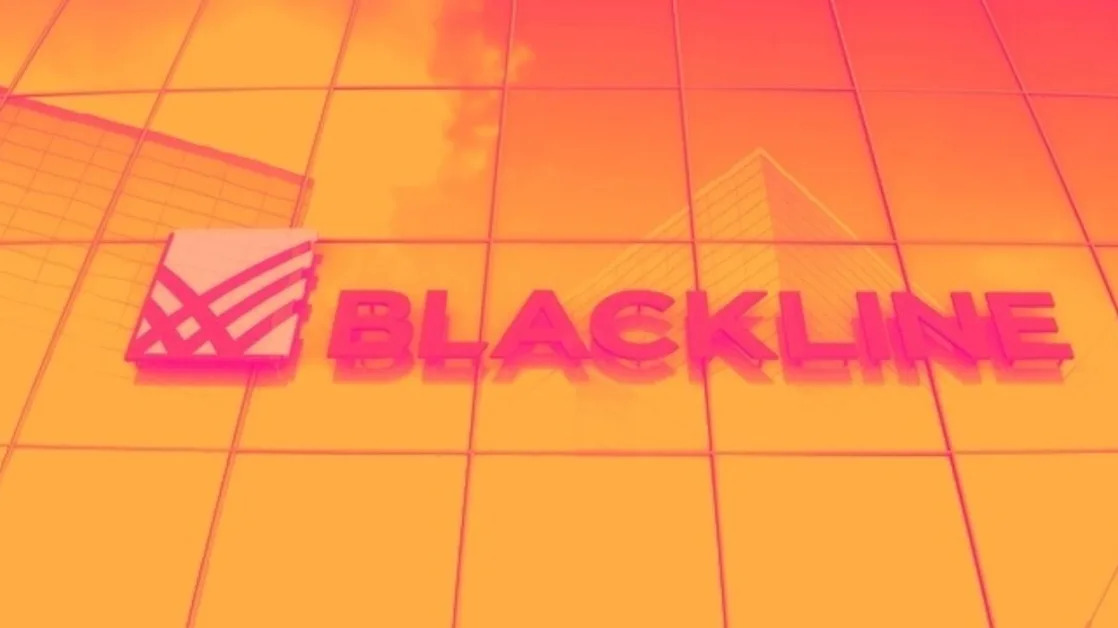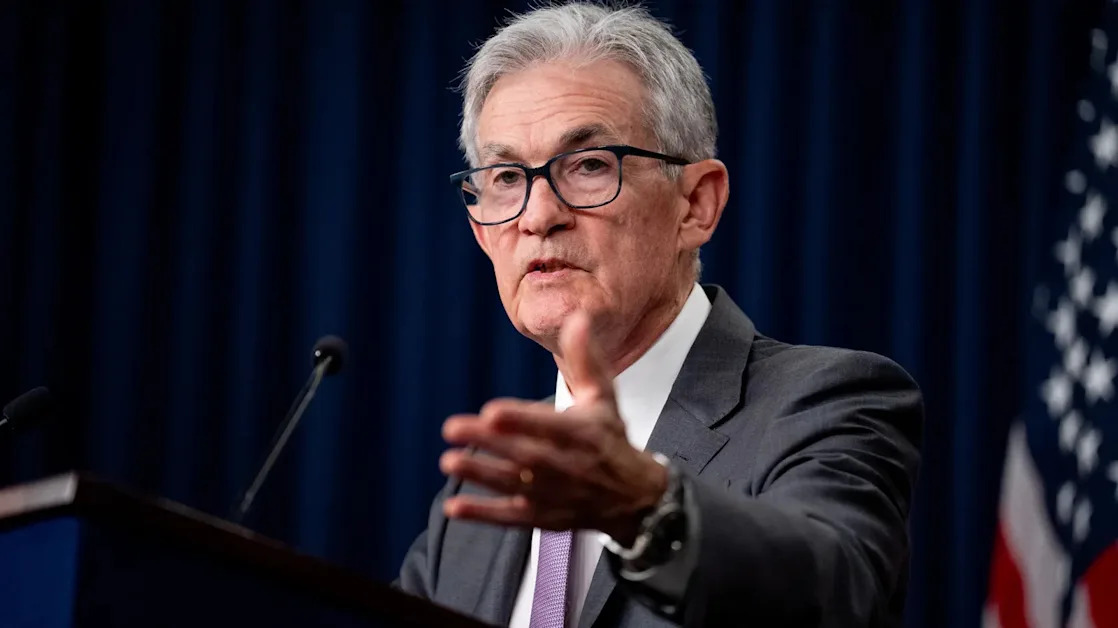
The Trump administration has effectively put a buy rating on Intel’s stock. But that alone won’t get the troubled chip maker out of its jam.
Intel’s shares have soared 22% so far this week. The run started after Vice President JD Vance delivered a speech at an AI summit in Paris early Tuesday that touted the White House’s aim to shore up domestic chip production. “The Trump administration will ensure that the most powerful AI systems are built in the U.S. with American-designed and manufactured chips,” Vance said.
That was followed by a report from Robert W. Baird analysts claiming that the U.S. government was trying to broker discussions between Intel and its main rival in chip manufacturing. Citing “discussions from the Asia supply chain,” the report said Taiwan Semiconductor Manufacturing—better known as TSMC—could become a joint owner of Intel’s manufacturing business following a spinoff while also having charge of running the facilities. “While there is no confirmation and potential completion of this project could be lengthy, we think this move makes sense,” the report read.
The idea of such a partnership has been floated before. And Intel already has taken steps to turn its manufacturing arm, called Intel Foundry Services, into a separate subsidiary , which would theoretically make a future spinoff easier.
But the stock’s huge gains—fed by relatively thin gruel—are more a reflection of the dire straits Intel is now starting from . Deteriorating sales and a cash-burning manufacturing business have cratered the company’s market value. Intel’s stock price plunged 60% last year and was trading near its 10-year low as of last week. Even with the stock’s recent pickup, Intel’s market capitalization is now about one-eighth that of TSMC’s. The two companies were valued at parity in U.S. dollar terms just five years ago, according to data from S&P Global Market Intelligence.
Still, Intel’s position as the only U.S.-based chip maker with leading-edge production capabilities that can fabricate the most advanced processors does make it vital to the vision of the Trump administration. The world’s two other leading-edge chip makers—TSMC and Samsung—are building new plants in the U.S. But both are foreign domiciled, and in a worst-case scenario, TSMC could find itself directly in the crosshairs of a conflict with China over Taiwan. TSMC fabricates nearly all of the most-advanced chips used by major U.S. tech giants like Nvidia, Apple, Qualcomm, Advanced Micro Devices and others in their products.
By contrast, Intel’s foundry business still generates the bulk of its business making chips that Intel designs. And that stark reality is what drives speculation that Intel’s only hope may be a complicated tie-up with its chief manufacturing rival, which can steer some of those other customers into Intel’s fabs. Intel’s foundry operation lost more than $13 billion on $17.5 billion in revenue last year. TSMC generated $41.1 billion in operating profit on $90 billion in revenue over the same period.
“Our view has been that Intel’s core server and PC businesses will no longer generate enough growth to absorb the significant costs for leading-edge fabs,” Wolfe Research analyst Chris Caso wrote in a note to clients on Thursday. He added that “only TSMC can drive the foundry volume needed to absorb Intel’s fixed costs in an expeditious manner.”
But while Intel and TSMC are ostensibly in the same business, there are sharp differences in how the two operate. Most notably, Intel has spent most of its long history exclusively manufacturing chips based on its own designs. “Intel’s process ecosystem, design methodologies and manufacturing systems are fundamentally different from TSMC,” Citigroup analyst Laura Chen wrote in a report Thursday, adding that those differences would create “significant” barriers for potential clients of Intel.
Those problems won’t be solved easily, even with the explicit blessing of the Trump administration. And more money is still needed. Intel has burned nearly $40 billion in cash over the last three years in a race to catch its manufacturing processes up to TSMC, while analysts expect negative free cash flow to continue through the end of next year, according to FactSet estimates. An arranged marriage may not be Intel’s salvation, but money and time haven’t proven to be either.
Write to Dan Gallagher at dan.gallagher@wsj.com





